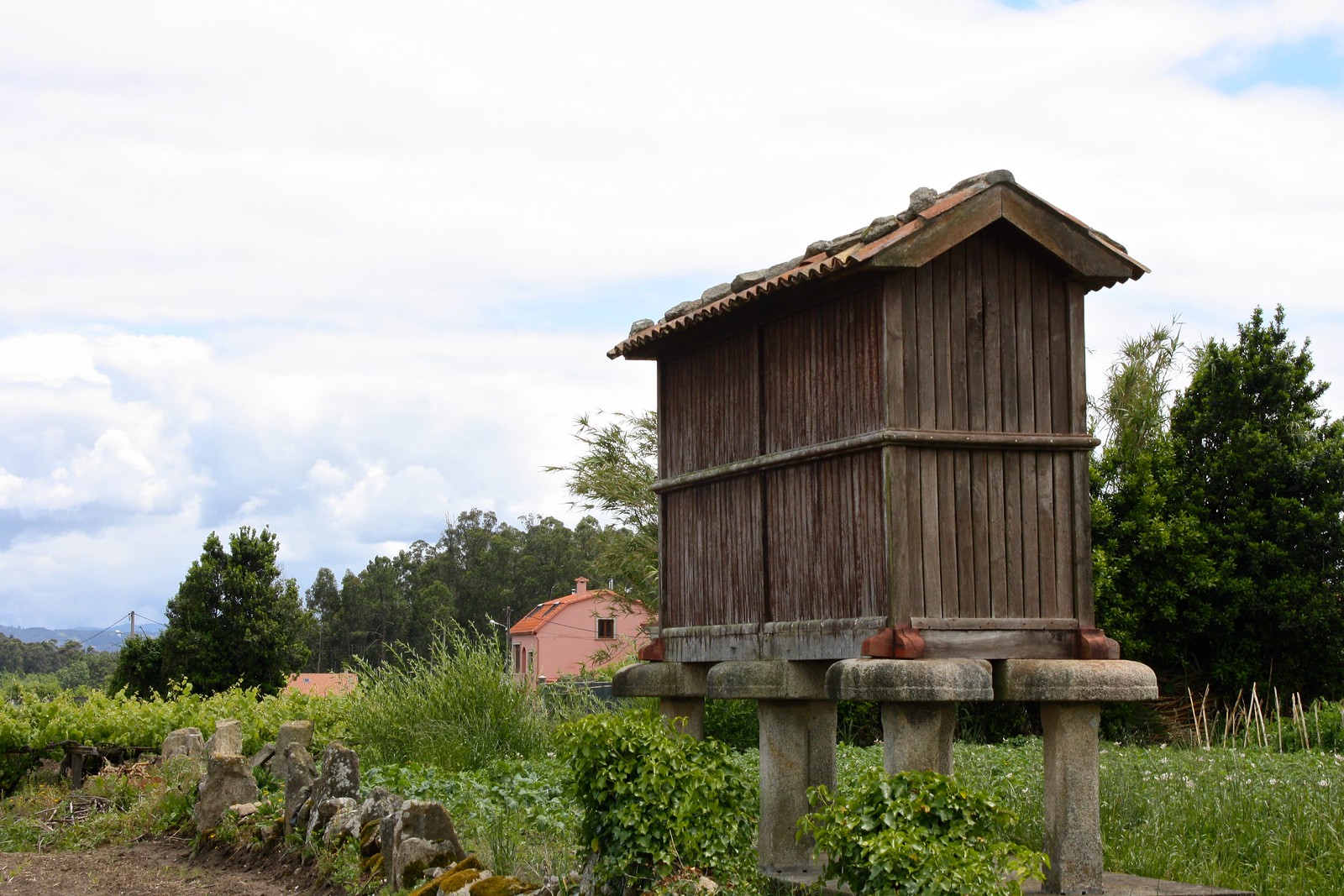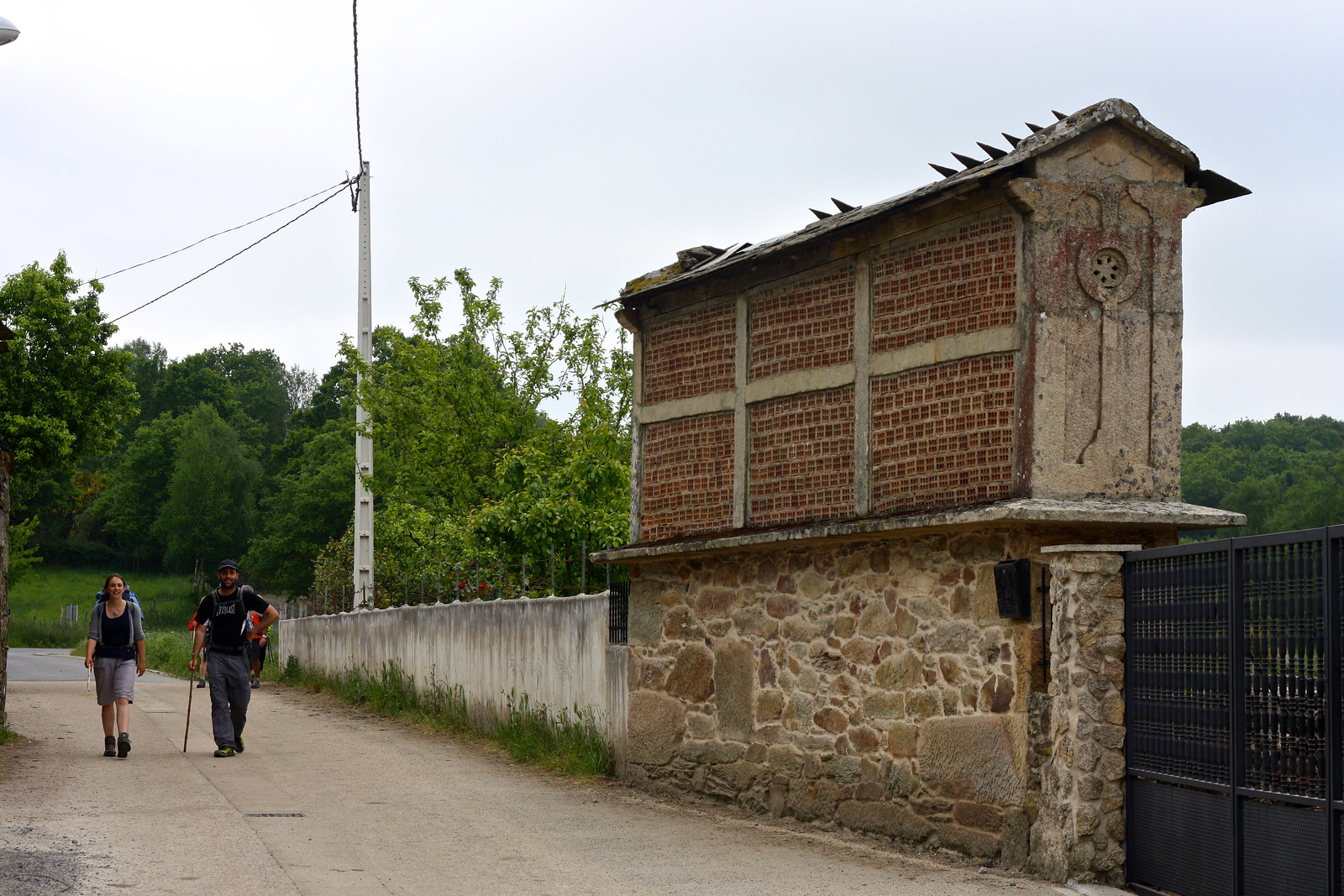Photo Post: Hórreos, or Galician Countryside Corncribs
Spend any amount of time outside Galicia’s seven major cities and you’ll quickly notice these peculiar little sheds that are everywhere in Spain’s northwestern countryside: the hórreo. Not to be confused with Oreo cookies, they’re pronounced “OR-ray-o” [ˈo.re.o] and are simply the traditional corncribs or granaries that Galicians have used for centuries to store corn, grain, and other harvested crops.
 |
| Hórreo in Abanqueiro |
Sided with wood to keep out the humidity and elevated on stilts to keep out the critters, hórreos are a common sight in rural Galicia—in fact, it’s estimated that there are 100,000 of them around the region. The most typical form is a small, rectangular construction with a granite skeleton, wooden slatted siding, and a roof of clay tiles. The further east you go, however, they become larger and more square-shaped, often donning slate shingles. Sometimes, recently-built hórreos emulate contemporary Spanish housing and sport a concrete frame with brick walls.
 |
| Hórreo along the Camino de Santiago |
If you ever happen to be hiking the Camino de Santiago, you most certainly will walk by hundreds of these guys as you approach Santiago de Compostela. I really enjoy seeing them whenever I ride the bus to work, as they’re a really charming feature of the green Galician countryside.
Have you seen hórreos outside of Galicia before? Tell me anything you know about them below in the comments!

